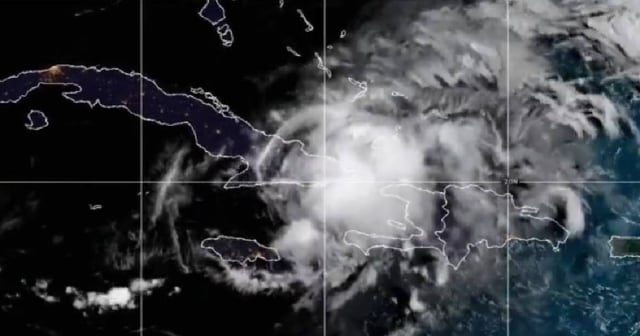Vicente de la O Levy, Minister of Energy and Mines, updated on the progress of the restoration of the Cuban electrical system and anticipated that around two or three in the afternoon this Monday, a significant improvement is expected with the operation of the CTE Antonio Guiteras, which he said is already ready.
"In the western part of the country, especially in Havana, the situation has improved notably, with more than 56% of customers receiving electricity. We will maintain the service without interruptions until two or three in the afternoon, when an additional improvement is expected with the commissioning of the CTE Antonio Guiteras, which is already ready," he said in an interview with the communication team of the Presidency of Cuba.
The minister specified that starting at that time, "a significant capacity will be added," and with the CTE Antonio Guiteras in operation, along with the generation from Hanabanilla and the plants in the central and eastern provinces, they will be transferring about 200 MW to those regions.
De la O Levy said that after the latest collapse of the electrical system, they immediately began working on its recovery.
"We followed a procedure similar to the previous one, but with a calmer approach, reactivating the Energás units. Currently, almost all the Energás units are synchronized, except one. This allowed us to restore service in Havana and activate the barges in the Bay. Additionally, we managed to synchronize the Mariel site, which also helped improve the situation," he described.
He added that they have also incorporated the CTE Nuevitas, which has improved the situation in the east of the country, the region most affected so far.
He said that Granma presents a particular situation, having managed to create an energy "island" that allows more than 40% of customers to have electricity service.
"With the synchronization of the CTE of Diez de Octubre, the energy island of Granma, and the barge from Santiago de Cuba, we have started to bring online the power plants in the east. We will soon activate Felton and the engines of Moa to complete the system," he added.
Regarding the hurricane, although it is not directly impacting Felton or Santiago de Cuba, the winds could affect the 220 KV lines that connect Felton and Renté, and they are monitoring the situation.
In Guantánamo, the most affected municipalities are Baracoa and Maisí, where he assured that they have brigades and resources ready to intervene once the winds and rains have finished.
"With the improvements in the Renté and Felton CTEs, Guantánamo will also see an immediate improvement in its electrical situation," he concluded.
On the morning of this Monday, it was revealed that, following the disconnection of the National Electric System in the afternoon of Sunday, the Electric Union (UNE) changed its strategy to divide the electricity supply into several independent systems by regions.
According to what was explained, the measure aims to ensure the stability of the rest of the system in case of future failures.
This division of the electrical system into zones aims to reduce the effects of future failures and increase the energy stability of each area, amid the energy crisis affecting the entire island.
A new disconnection from the National Electric System (SEN) occurred on the afternoon of this Sunday following a "trip" at the 10 de Octubre Thermoelectric Power Plant (CTE) in Nuevitas, Camagüey.
Without providing further details, the regime limited itself to saying that it was working tirelessly to restore the National Electric System.
Since last Friday at noon, when the complete outage of the SEN occurred, Cubans have experienced overwhelming and extensive blackouts that have paralyzed the country.
On Saturday morning, during the recovery process of the SEN after the total blackout on Friday at noon, the system collapsed again. The electricity supply that reached a few thousand users and powered the start-up of the thermoelectric plants through distributed generation disappeared once more, along with the hope of overcoming the crisis.
That same day, the province of Matanzas experienced a general blackout, following a "failure in the startup of the electrical microsystem."
Significant breakdowns have also been reported in Unit 3 of the Carlos Manuel de Céspedes Thermoelectric Plant in Cienfuegos and in Generation Block No. 3 of the Antonio Maceo Thermoelectric Plant, also known as Renté, in Santiago de Cuba. As a result of the latter, a microsystem failure occurred, affecting the provinces of Santiago de Cuba and Guantánamo, leaving them without electricity service.
What do you think?
SEE COMMENTS (2)Filed under:
